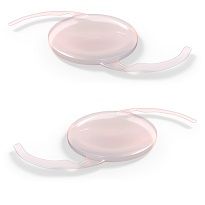Article
AcrySof IOLs Found "Rotationally Stable" Compared to Tecnis
Author(s):
In a retrospective comparison of post-implantation cases of residual refractive astigmatism, researches found AcrySof's intraocular lenses less likely to misalign.

At the American Academy of Ophthalmology 2016 Meeting in Chicago, Brent Kramer presented the results of a compelling comparative analysis of the stability of two different makes of toric intraocular lenses (IOLs) to determine which was more likely to misalign.
In the presentation, Kramer identified two primary causes of residual refractive astigmatism after implantation: either the lens was of the wrong power or it was in the wrong place, whether (rarely) implanted at the incorrect axis or misaligned. Data was culled from Astigmatismfix.com, a “Toric Results Analyzer.” After reviewing data on nearly 8,000 cases from 2012 to 2015, his group found that 69% of cases involved lenses misaligned 5 degrees or more from their intended position.
When lenses were split by make, the two most widely common were from AcrySof and Tecnis. The data showed a great disparity in the likelihood to misalign, finding the Tecnis Toic IOL varieties almost 2.5 times more likely to do so. When misalignment did occur, the Tecnis lenses tended to migrate counter clockwise about two-thirds of the time, with their AcrySof counterparts showing no particular rotational bias.
This study group of implanted lenses that displayed a significant 5 degree or greater misalignment represents just a fraction of toric IOLs overall, less than 1 percent. Still, the study deemed the AcrySof Toric IOL “more rotationally stable” and “less likely than the Tecnis Toric IOL to cause residual astigmatism as a result of misorientation.”
Related Coverage
Directory of Military Eye Injuries Can Inform Policy and Care
Novel Mobile App May Help Doctors Diagnose Uveitis
"Ophthalmology Finally has a Simple Test that Can Detect HSV Infection.”




